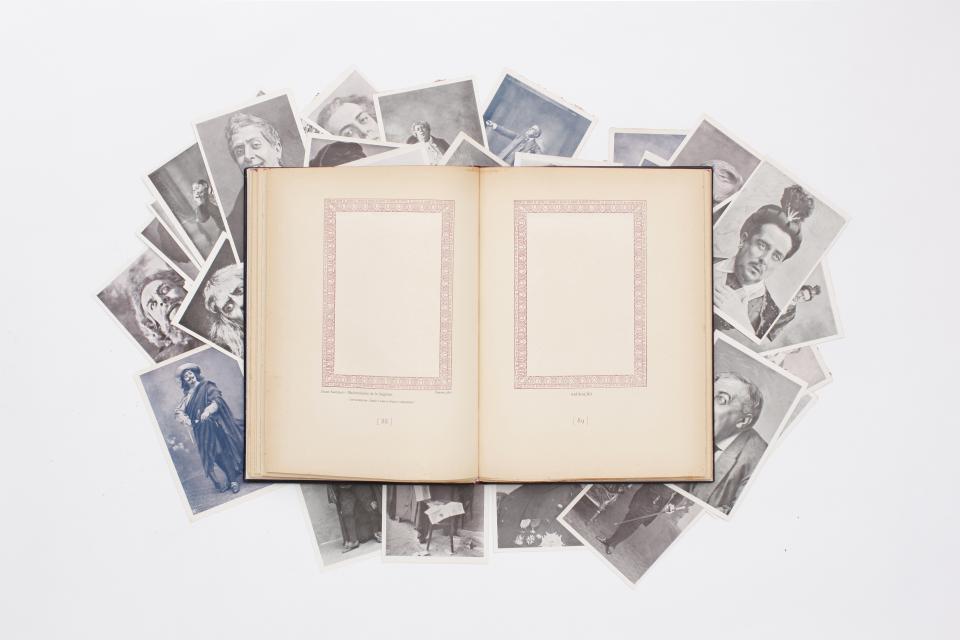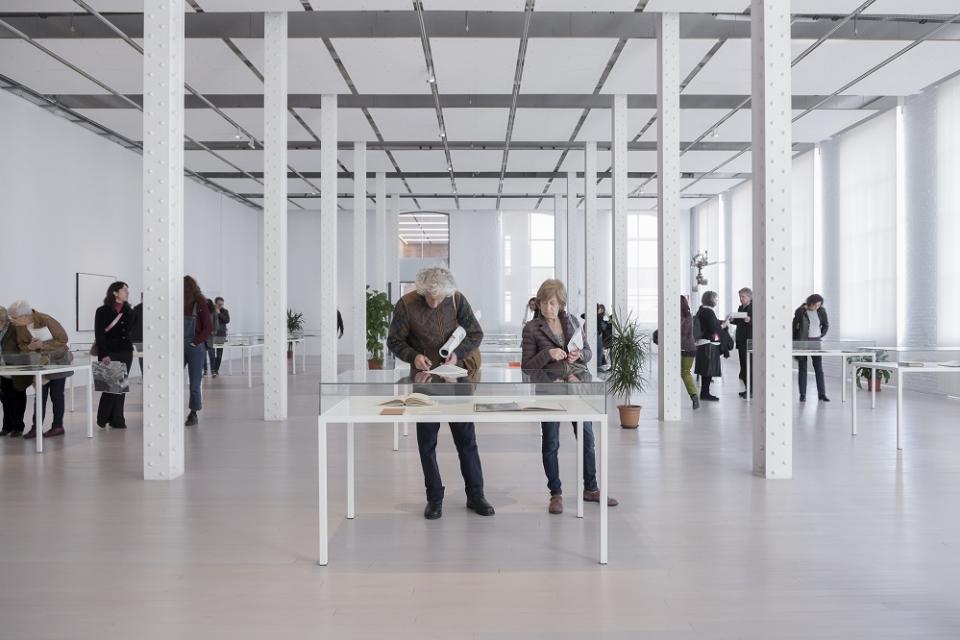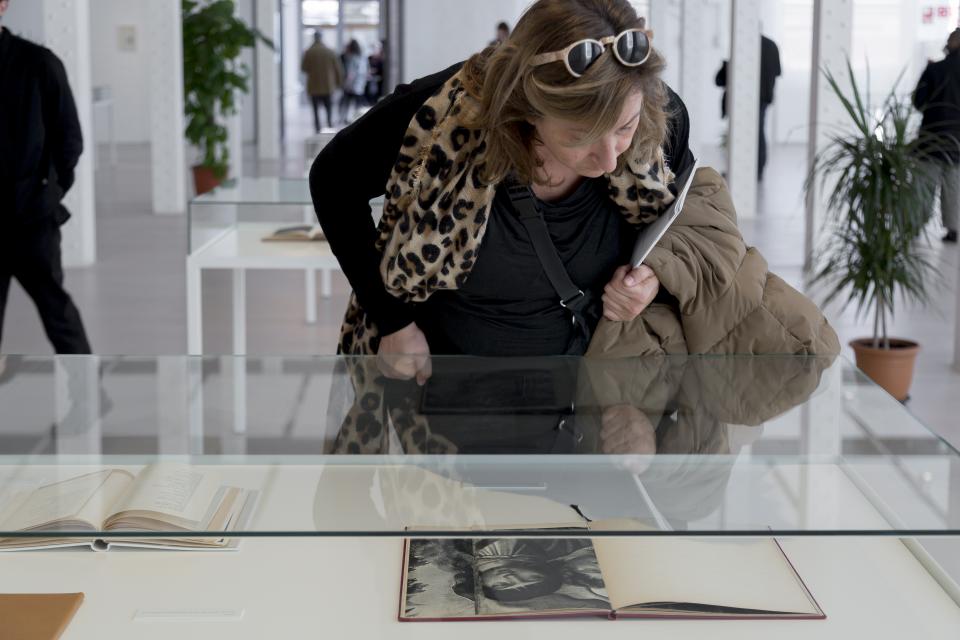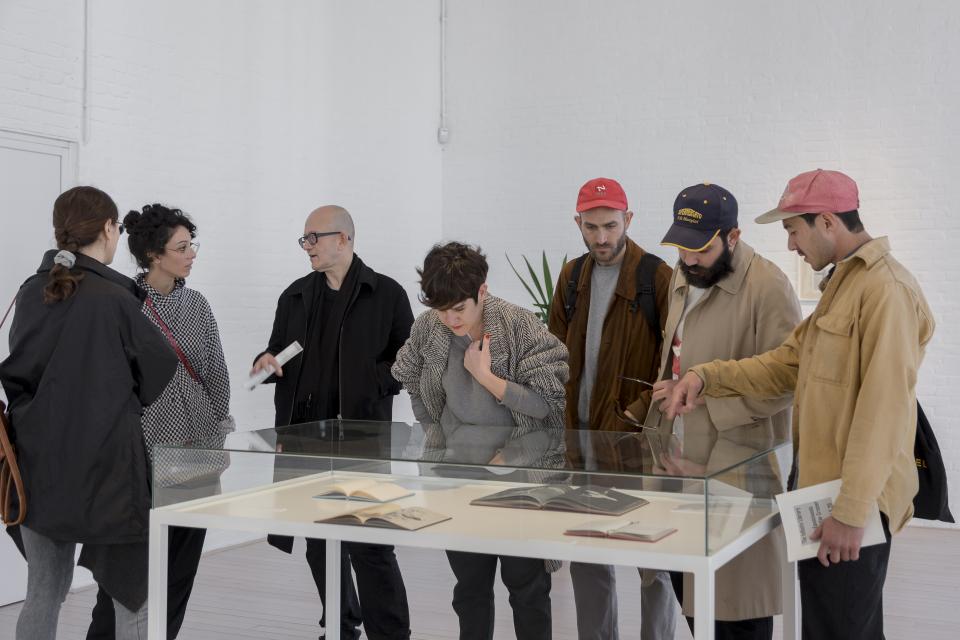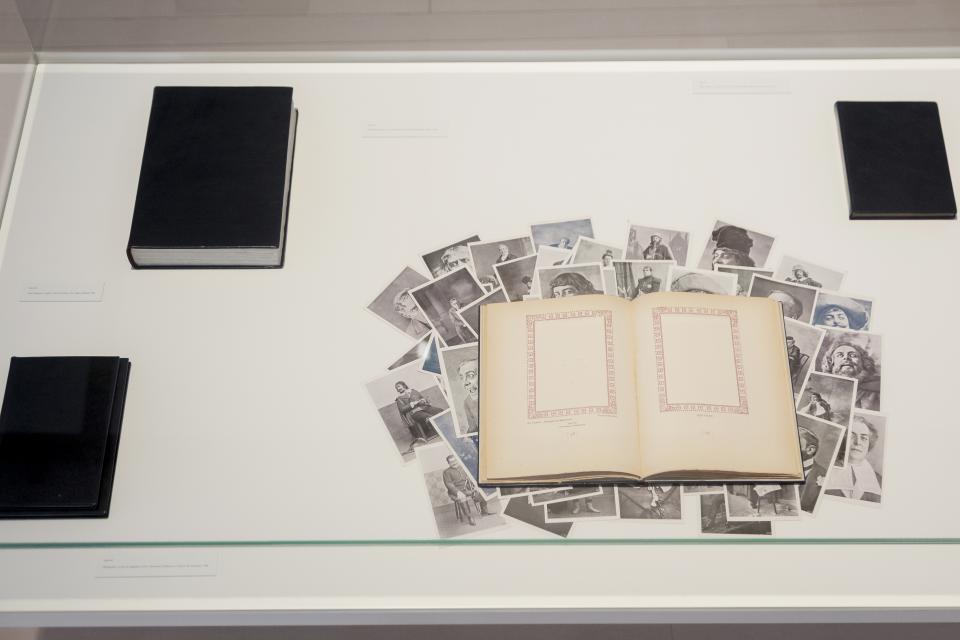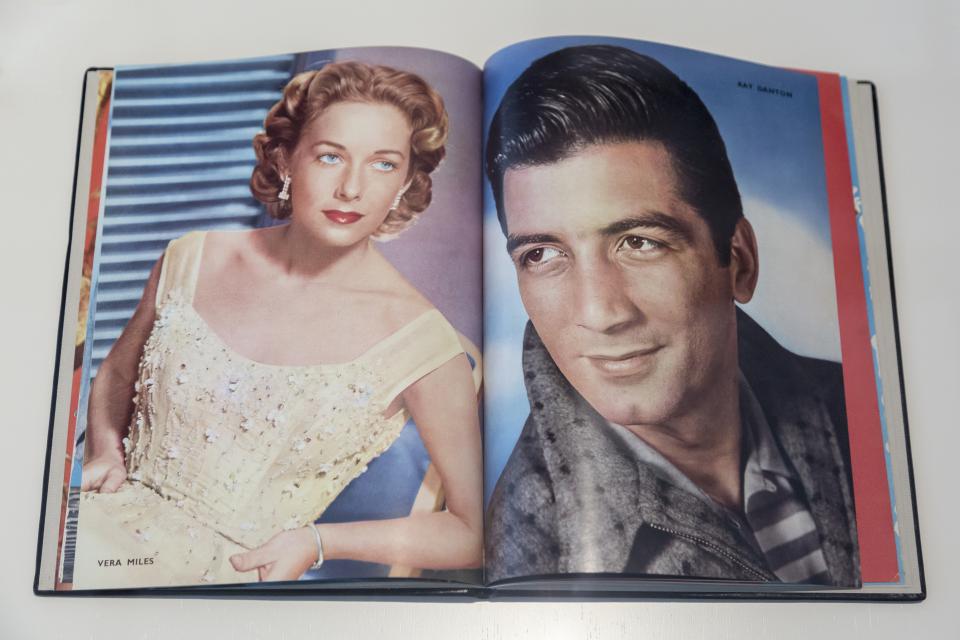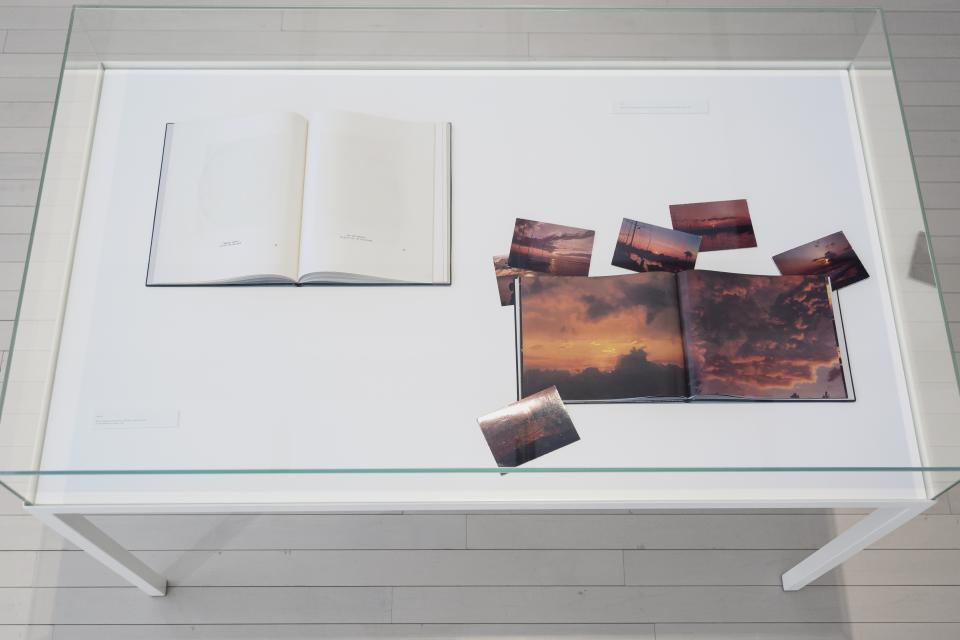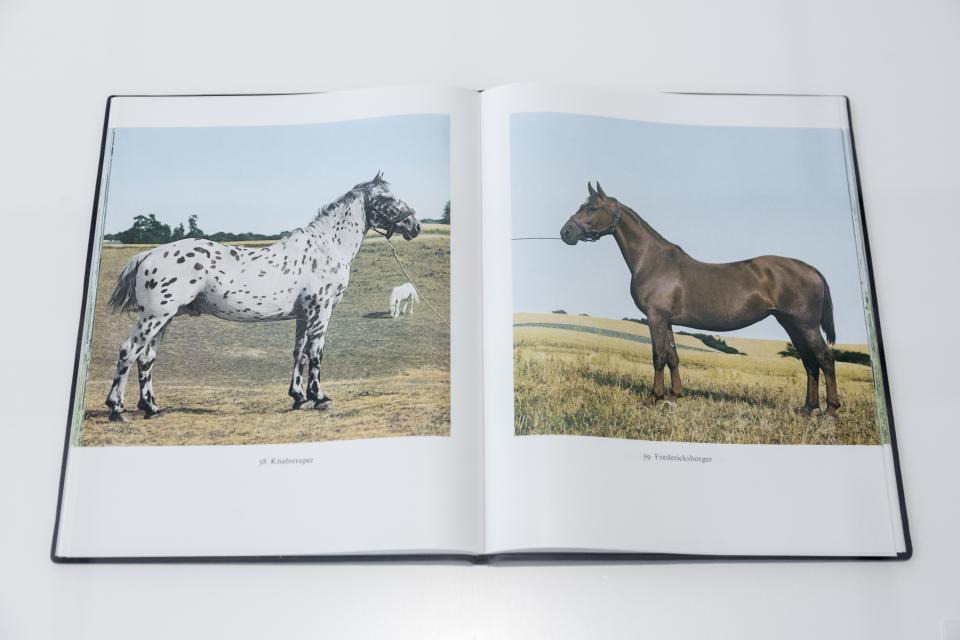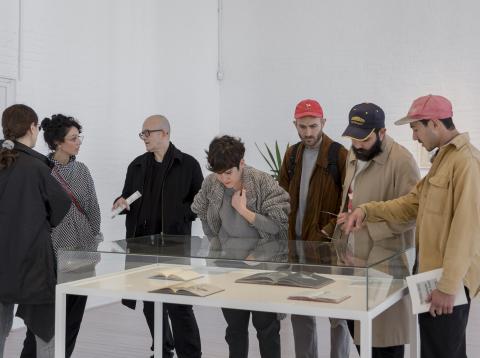The Infinite Library
Artists: Haris Epaminonda and Daniel Gustav Cramer
Dates: 15 February - 27 September 2020 (August: closed)
Exhibition Opening: 15 February, 12.00
Where: 2nd Floor
Notice: this exhibition is extended until September 27, 2020. Due to the current health situation (COVID-19), the visit to the piece/event on the 3rd floor is ruled out, as it involved an interaction with the visitor.
---
The Infinite Library was founded in 2007 and is an ongoing collaboration between Berlin-based artists Haris Epaminonda and Daniel Gustav Cramer. It is an expanding archive of books, made through the recombination of pages from one or more found publications dating from 1890 up to the 1980s. Each book is dismantled, modified, and restructured into new unique volumes. Pictures and pages—momentarily out of order—are brought together to shape yet another whole. The concept for each new volume develops gradually, starting from the content of the original book and the associations that unfold in the process of making. Through empirical, conceptual or poetic criteria, Haris Epaminonda and Daniel Gustav Cramer’s ‘infinite library’ questions the plasticity of the printed books as an art form and the innumerable possibilities of appropriating such material by recycling, overlapping, juxtaposing, remixing, merging or altering them—even to the point that the original material ceases to exist, and in effect shifting the way we view them.
Inspired by Jorge Luis Borges’s writings, in particular his short story ‘The Library of Babel’, the artists imagine the library as a space of all possible arrangements and combinations, serving as a metaphor for the universe, in which humanity is on an endless search for knowledge. Perhaps even going so far as to consider the project as an analogy to the evolution of species, with multiple endings and beginnings, through reproduction and overlaps of origins, cultures and identities. The selective use and decontextualisation of existing content and knowledge also reflects current tendencies. In an accelerating digital world, the handling of the indefinite multiplicity and excessive nature of images and knowledge distribution becomes ever more complex and harder to grasp. The newly created volumes of The Infinite Library question matters of authenticity and authorship, acting as an acutely contemporary reflection on the status of images, on their production, re-production and circulation, and on their capacity to capture and carry information and meanings.
At Fabra i Coats, The Infinite Library is presented over two floors. The artists have designed 18 identical vitrines, inside which 100 books will be on view, exhibited across the entire space of the 2nd floor. On the 3rd floor, Epaminonda and Cramer are launching a new durational work, an ‘event’ that will take place every day during the opening hours over the course of the exhibition. Visitors are invited to take part, welcomed by a representative of The Infinite Library, who will guide each person, one at a time, to a desk placed inside the exhibition space. The visitor is then asked to inscribe his/her signature onto a page of a new volume that the artists have created and which they consider a ‘living’ sculpture: their largest book to date. Each visitor, by agreeing to sign the book with his/her name or a pseudonym, will become part of its making, and in return will be given a unique certificate of participation. The first volume will be completed at the end of the exhibition and will remain thereafter closed and displayed as such in the future.
The library, like the exhibition space which we have inherited and which ranges from the museum to the art centre, is a strategic place for establishing a narrative. The hand that arranges is also the one that catalogues. Whoever does the selecting and organising establishes the order of the discourse. Any collection follows that principle. As random as it may appear, everything in it is telling us what to look at and how to do it. The vitrines only seem transparent: as containers, they define their content. How we look at and read things always depends on their context, and the mechanism of exhibition has been fine-tuned and made intentionally aseptic, artificially neutral, for the purpose of directing without revealing a singular and univocal narrative—pretending that the things themselves are saying what someone has intended them to say. A pedagogical logic which assumes we are ignorant, incapable of reckoning what we do and don’t know. As a result, we tend to rely on exhibition labels, to quickly explain to us what we are seeing and thinking.
In this context, the proposal by Haris Epaminonda and Daniel Gustav Cramer is a radical one, since it exhibits an undefined content that breaks free from its container. Today, recovering the unimaginable space Borges described or the spaces that housed the cabinets of curiosities in the Renaissance leads us to rethink both exhibition and library as spaces of encounter and discovery. Places that offer shared, multiple and shifting narratives, which foster creativity, not just learning. Like the Imaginary Museum proposed by André Malraux in 1947, The Infinite Library tells us that it is possible to find a new use for what has been handed down to us, that there is room for that expanded museum, that potential library, but it all depends on us. As a part of their construction, we have to ask ourselves about the imaginary that (re)presents us.
In this exhibition, like in a library, the acts of looking and reading are on display, as actions rooted in imagination and reflection. In that sense, the individual and shared experience that takes place on the second floor gives rise, on the third, to a new expository condition, which generates a new book. The collection as a fetishistic ensemble encounters its immaterial, imaginary or critical nature. Contrasting with the calculated staging of history, seeing how this inventory of books participates in the present gives us a vision of art as everything it is and can be: an inexhaustible text that unfolds among the works. That is its boundlessness, represented in the perpetual action that records a secret collection of names, the multiple and unknown testimony of the literary community—that “unavowable community” referred to by Maurice Blanchot. And that is also the visitors’ commitment and emancipation; they must redefine their role in this open conversation.
Reception is a part of authorship and also sets it free. Without authority, every library, and every book in it, is a world of combinations that contains all possible books—those that have been written and those that are yet to come. A forthcoming publication The Infinite Library: Books 1-50, designed and produced by New Documents (Los Angeles), will be published in collaboration with Badischer Kunstverein and Fabra i Coats. This is the first time we will see The Infinite Library as a book. Time and space will change the images, and the exact replica of the old content will become original in a new container. “It suffices that a book be possible for it to exist,” as Borges wrote.
Free tours of the exhibitions every saturday at 18.00 and sunday at 12:30h. Free pre-registration at centredart@bcn.cat until 14.30 on the Friday before the weekend. Maximum capacity: 10 people (COVID-19 measure).
Free entrance.
Photo 1:
Book #29
Azevedo Neves
A Mascara d´um Actor
Cabeças d´Expressao
Paulino Ferreira
80, Rua Nova da Trinidade, 82, Lisboa
1914
Photos 2-7: Eva Carasol.



